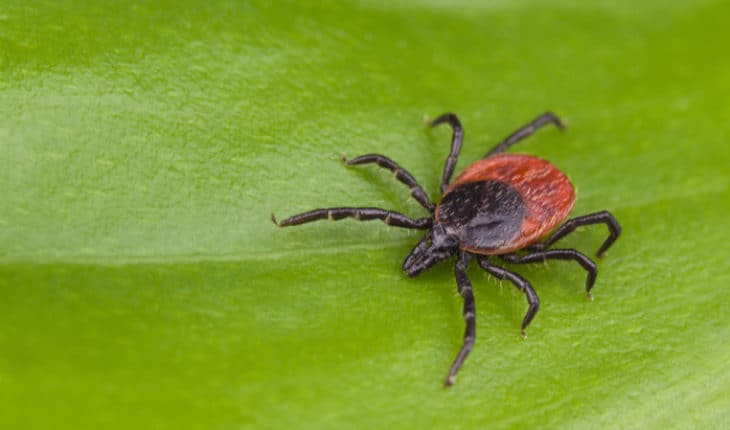All dog walkers should be aware of the dangers of a serious bacterial infection called Lyme disease, which is passed on by ticks to them and their dog. It can be a devastating disease, yet it can be easily treated if caught early.
Dogs, cats and humans can all get Lyme disease. Although it’s uncommon in cats and less serious in dogs, in humans it can be extremely serious, debilitating, life changing and in very rare cases can prove fatal.
Therefore, it is vital you know the signs to look out for and what to do, should you or your dog pick up a tick whilst out on a walk.
Ticks: the lowdown
What
Ticks are spider-like small parasites that bite into the skin and suck blood from other animals, including us.
Initially they are extremely small, but swell as they eat, eventually becoming pea sized and therefore easier to spot and remove.
When
Ticks are active throughout the year. However, you are most likely spot them between spring and autumn.
Where
Ticks are tiny creatures that live in woodland and areas of long grass. They are particularly prevalent if there are deer and other wildlife.
How
Ticks don’t fly or jump like fleas do. Instead they climb or drop on you or on your pet’s coat as they brush past whatever the tick is sitting on. Ticks will bite and feed on you, your dog or cat for up to a few days. Only once they’ve had enough do they drop off. It’s possible the tick could give you or your pet Lyme disease during this feeding time.
Tick removal
Ticks can carry Lyme disease and should ideally be removed by a medical professional. If this is not possible, they should be very carefully removed with tweezers or ideally with a proper tick remover.
When removing a tick, be careful not to squeeze the tick’s body or leave the head in. Leaving any parts of the tick in situ can quickly lead to infection.
Tick removal tool
In order to avoid squeezing the body or leaving the head in, you need to twist the entire tick off its prey. This is best done with a specially designed tick removal tool. These can be picked up at pet shops, vets or easily bought online.
Using a tick remover
When using a tick remover, you should insert under the tick and rotate 360 degrees. The aim is to entirely remove the tick and its mouthparts from yourself or your pet.
If in doubt, your vet will be able to show you the most effective method of removing a tick by twisting.
Tick removal methods to avoid
Never burn the tick off or try and use chemicals or lotions to kill it.
Do keep the tick in a container to show to the veterinary or medical professionals so they can ensure has been removed entirely.
Lyme disease in humans:
Lyme disease is a serious illness in humans, characterised by flu like symptoms, lethargy and aches and pains. 50% of people with Lyme disease develop a classic bulls eye type rash, which can appear on any part of the body and not necessarily where they were bitten. If you are worried you might have contracted Lyme disease, visit your doctor urgently.
Severe long-term problems
If Lyme disease is diagnosed and treated quickly it is possible to make a full recovery, however it can cause paralysis, arthritis, meningitis and severe long-term problems.
Lyme disease in dogs
But Lyme disease isn’t only a problem for humans. It is one of the most common diseases transmitted by ticks. However, it only causes symptoms in 5-10% of affected dogs. Furthermore, the initial symptoms differ too, as they don’t display the same ‘bullseye’ rash. As a result, you may now know that your pet is affected until they attend the vet with some other problem.
According to the RSPCA symptoms of Lyme disease with cats and dogs include:
- Depression
- Loss of appetite
- Fever
- Lameness
- Swollen and painful joints
- Swollen lymph nodes
- Lethargic.
If your dog displays any of these symptoms, please visit your vet as soon as possible.
Tick prevention
Cover up with long trousers and socks when walking in woodland and long grass and always check yourself, your clothes and your dog for ticks on your return.
Get into the habit of checking for ticks on a daily basis. If you find them learn how to remove them properly to prevent infection.
Tick treatment
You can also use a treatment to stop ticks from biting your pet. The treatment works by either killing or repelling the tick if they attach. They come in tablet form or spot on treatments.
Treatment for Lyme disease
Early detection is key. If caught early, Lyme disease can be treated with antibiotics. Therefore, if you think your dog or cat has Lyme disease, contact your vet who can run tests and start treatment if necessary.
- Gut microbiome could delay onset of type 1 diabetes - 3rd April 2025
- The da Vinci 5 Robot Is Set To Transform Bariatric Care: - 31st March 2025
- Beyond money: the hidden drivers fuelling child food insecurity - 31st March 2025






